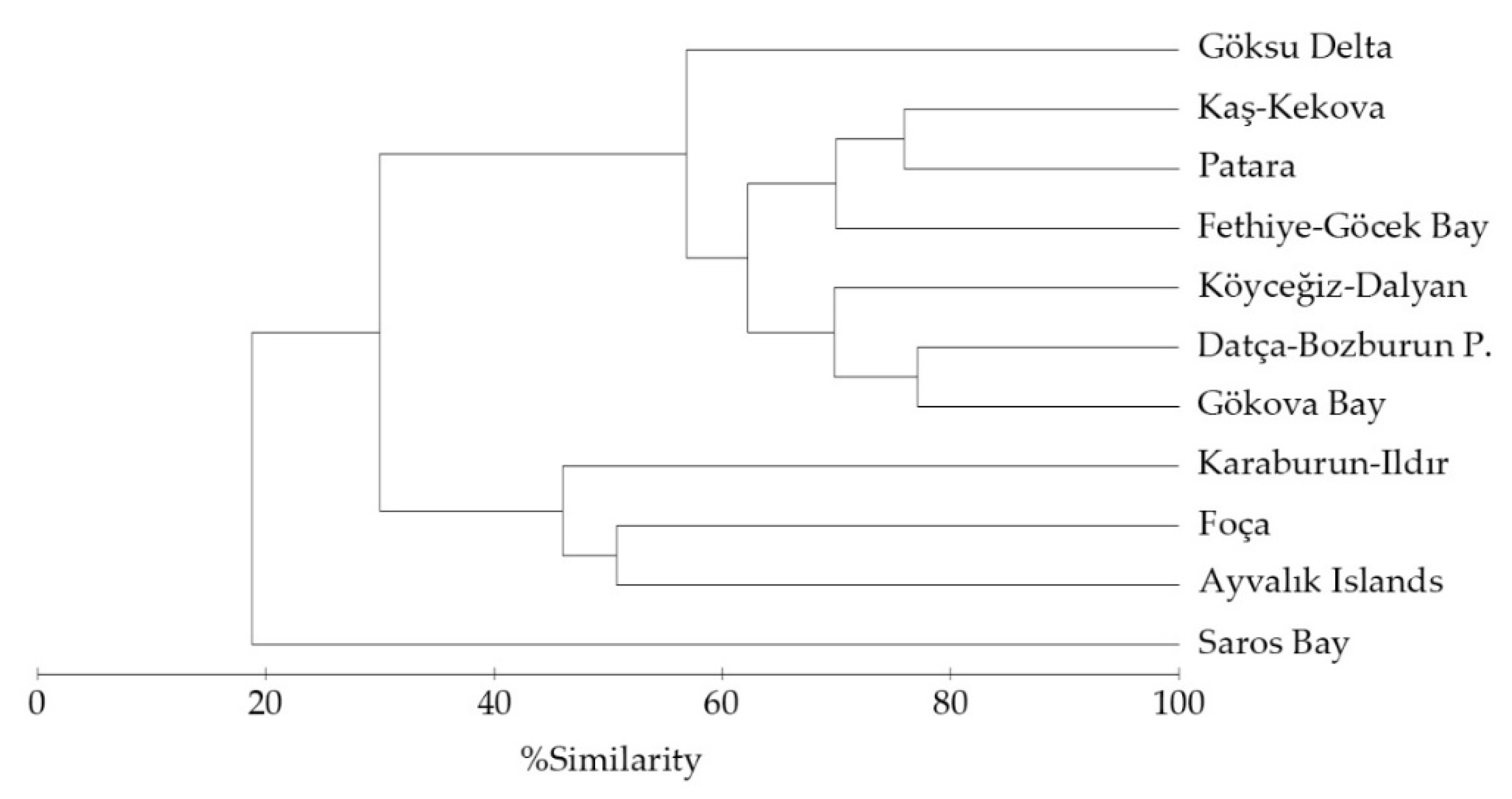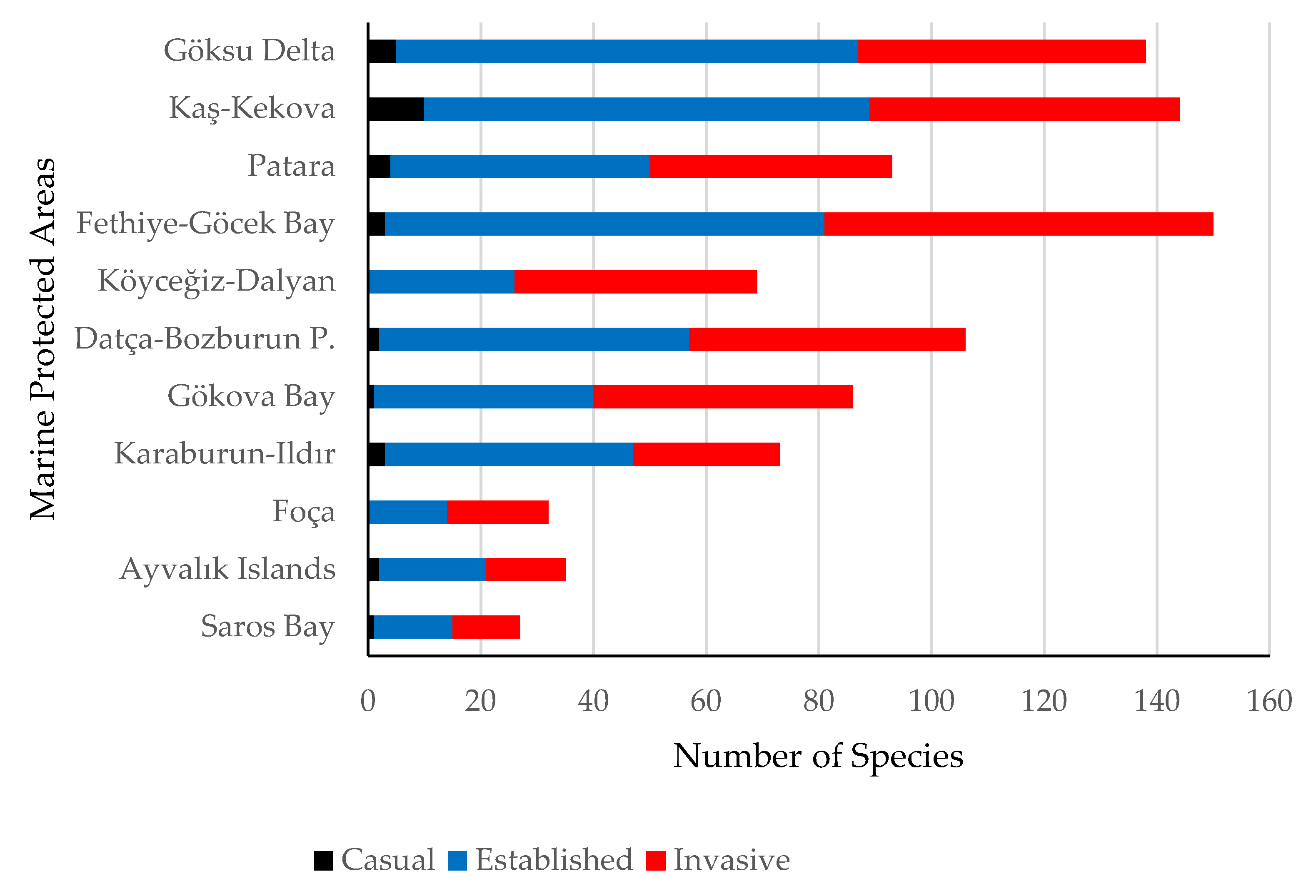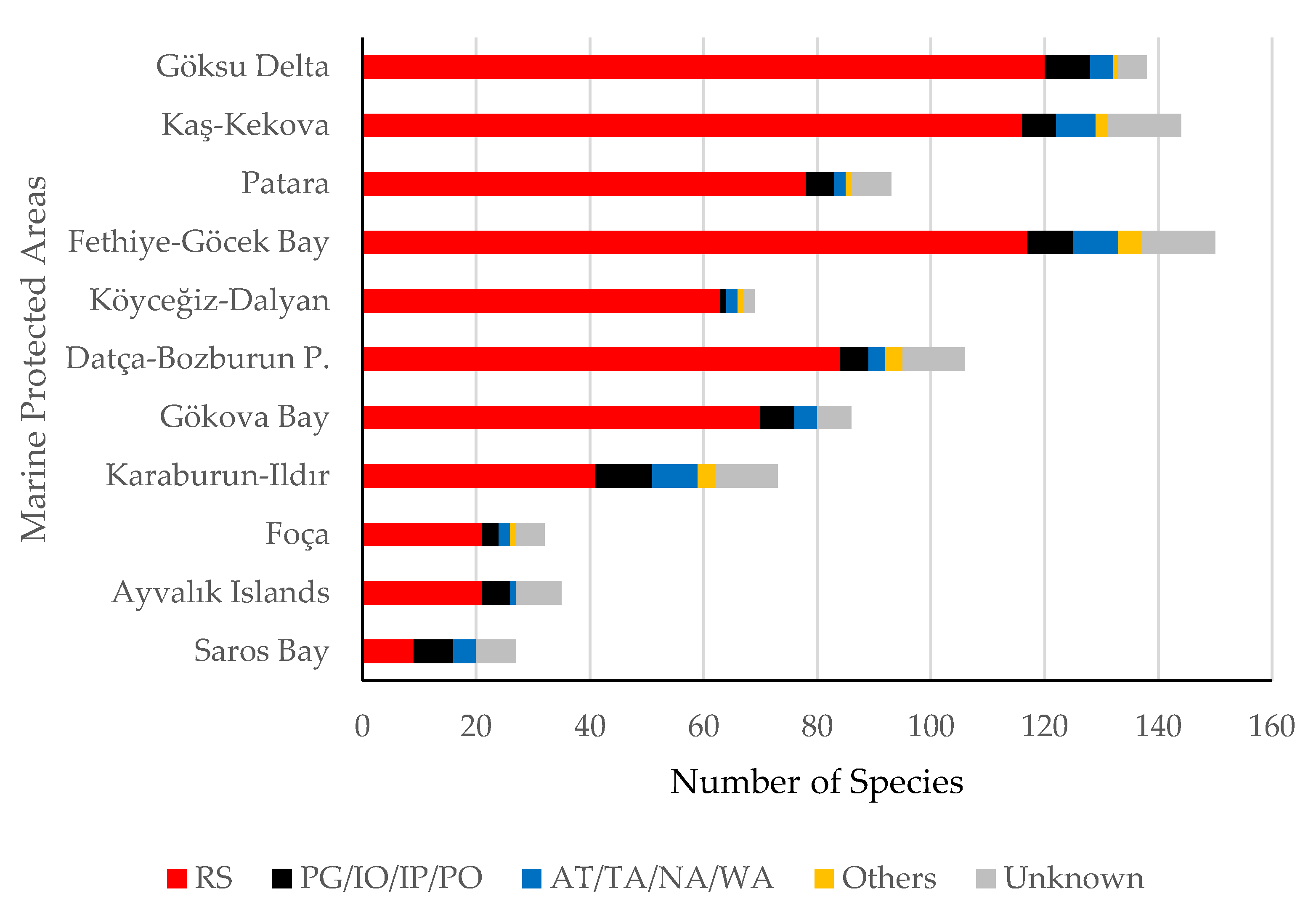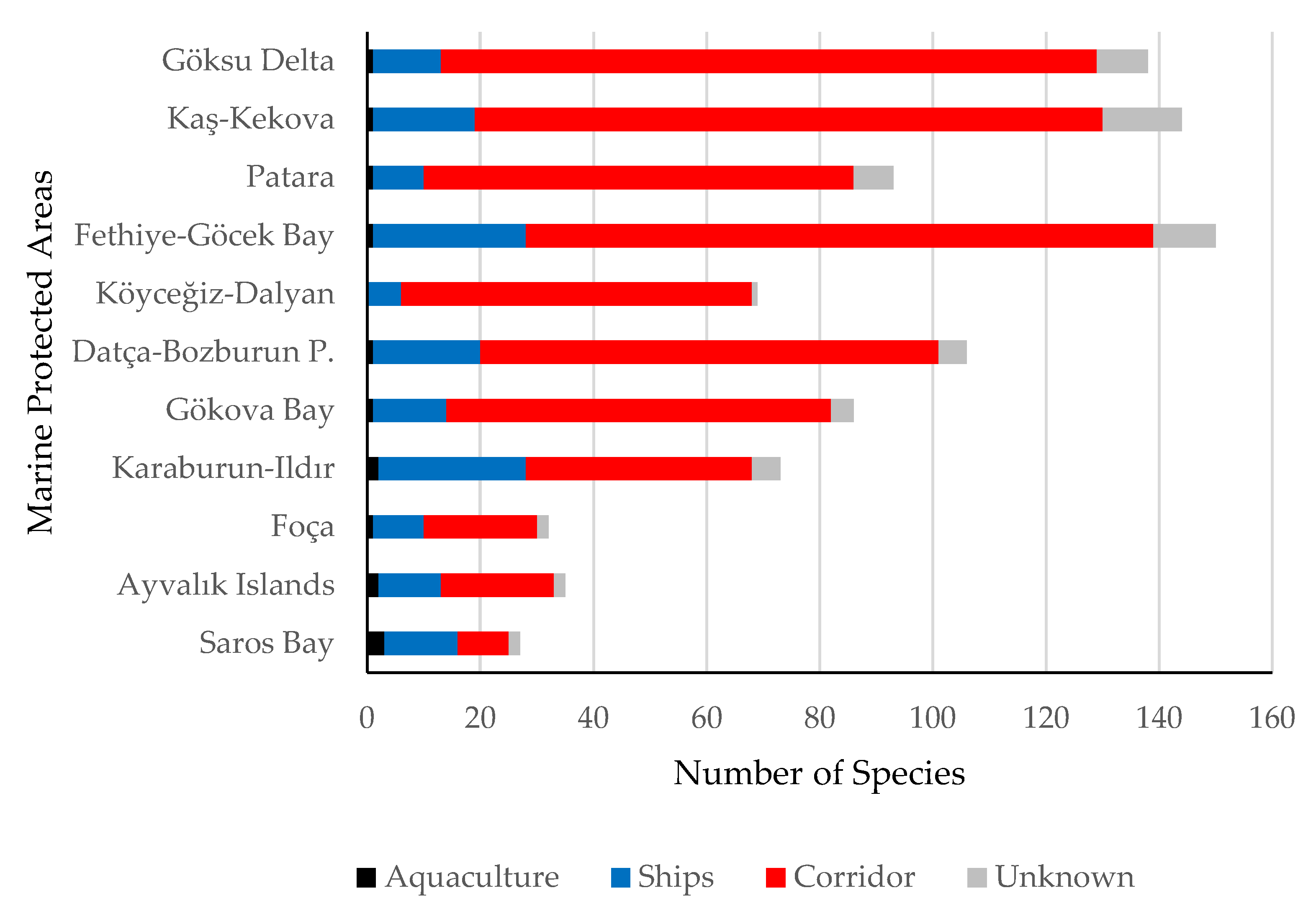1000/1000
Hot
Most Recent

Marine Protected Areas (MPAs) are one of the most effective conservation tools in the management of marine ecosystem alterations around the world, by maintaining natural ecological processes, increasing ecosystem resilience, preserving genetic diversity, ensuring the sustainable utilization of species and ecosystems, restoring the biomass and structure of species assemblages, and providing socio-economic benefits. The majority of Mediterranean MPAs are at a high risk of invasion and their boundaries offer almost no protection from many high-impact invasive species.
The alien species inventory of Turkish MPAs included a total of 289 species belonging to 15 phyla, the majority of which had established successfully breeding populations throughout the study sites (61.6%) and a significant portion displayed an invasive character (29.4%). Mollusca ranked first in terms of the number of alien species (64 sp.), followed by Chordata (55 sp.), Arthropoda (44 sp.) and Annelida (39 sp.).
There were significant differences in local alien biodiversity, with a clear decreasing pattern in a clockwise direction from Levantine towards the northern Aegean Sea coasts. The cluster analysis showed that MPAs were clearly separated into two groups (northern Aegean Sea areas vs. southern Aegean Sea and Levant Sea combined) at 30.0% similarity, which split further at 46.0% and 56.9% similarities (Figure 1).

Figure 1. Group average sorting dendrogram of Turkish MPAs based on binary data (presence and absence) of alien taxa.
It is striking that the number of casual aliens is quite low throughout the entire study area (none in Foça and Köyceğiz-Dalyan, ranging from 1.2% to 6.9% elsewhere), where the great majority of the species are either characterized by successfully breeding established populations or possess an invasive character (Figure 2). The proportion of invasive taxa ranged from 37.0% (Göksu Delta) to 62.3% (Köyceğiz-Dalyan), displaying a large-scale impact regardless of their occurrence localities. The two invasive fish, Lagocephalus sceleratus (Gmelin, 1789) and Siganus rivulatus (Forsskål, 1775) were present in each of the MPAs, while some other noxious species, such as Caulerpa cylindracea (Sonder, 1845) (Chlorophyta), Asparagopsis armata (Harvey, 1855) (Rhodophyta), Leodice antennata (Savigny, 1820) (Annelida), etc., were absent in just a few sites.

Figure 2. Establishment success of alien taxa in MPAs.
According to their origins, there was a very pronounced dominance of Red Sea originated species (201 sp., out of 289 sp.), while the contribution of rest of the categories was set at low levels (Figure 3). This was an expected result, since Turkey was geographically located close to the Red Sea, which explained why corridors (Suez Canal) were the main vector of the species introductions (Figure 4). Ship-transferred species were higher in proportion at the north Aegean MPAs (Saros Bay, Ayvalık Islands, Foça and Karaburun-Ildır, ranging between 28.1–48.1%), significantly reducing to levels of 8.7–18.0% in the rest of the coastal areas. Saros Bay was the only locality that shipping-oriented introductions outnumbered Suez Canal introductions (13 sp. vs. 9 sp., respectively); the latter vector was dominant elsewhere. Aquaculture was the least impacting vector and only four such species were present in MPAs (for example, the Pacific Ocean originated invasive bivalve Ruditapes philippinarum (Adams & Reeve, 1850)).
 Figure 3. Origins of alien taxa in MPAs. For ease of interpretation, low contributing origins were grouped: red group, RS: Red Sea; black group, PG: Persian Gulf, IO: Indian Ocean, IP: Indo-Pacific, PO: Pacific Ocean; blue group, AT: Atlantic, TA: Tropical Atlantic, NA: North Atlantic, WA: Western Atlantic; yellow group (others), ST: Subtropical Atlantic/Pacific, CT: Circumtropical; grey group, species with currently unknown origin).
Figure 3. Origins of alien taxa in MPAs. For ease of interpretation, low contributing origins were grouped: red group, RS: Red Sea; black group, PG: Persian Gulf, IO: Indian Ocean, IP: Indo-Pacific, PO: Pacific Ocean; blue group, AT: Atlantic, TA: Tropical Atlantic, NA: North Atlantic, WA: Western Atlantic; yellow group (others), ST: Subtropical Atlantic/Pacific, CT: Circumtropical; grey group, species with currently unknown origin).

Figure 4. Pathways of the introduction of alien taxa in MPAs.